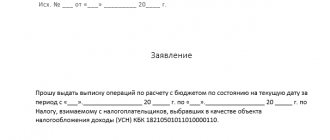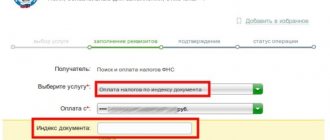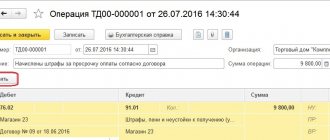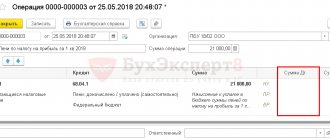VAT
During reorganization, property, rights, and obligations are transferred from the reorganized company (hereinafter referred to as the legal predecessor) to the legal successor. Let's consider whether such a transfer is subject to VAT and what happens to the deductions for this tax from the predecessor and successor.
Transfer of property and rights
Issues related to the calculation of VAT when transferring property and rights to a legal successor are resolved in the Tax Code. So, according to sub. 1 item 2 art. 146 of the Tax Code of the Russian Federation, operations specified in paragraph 3 of Art. 39 of the Tax Code of the Russian Federation are not subject to VAT taxation. Such operations include the transfer of fixed assets, intangible assets and (or) other property of the organization to its legal successor(s) during reorganization (subclause 2, clause 3, article 39 of the Tax Code of the Russian Federation).
As for property rights, for example, accounts receivable, their transfer is not recognized as an object of VAT taxation on the basis of subsection. 7 paragraph 2 art. 146 of the Tax Code of the Russian Federation.
Restoration of VAT on transferred property
For the legal predecessor in paragraph 8 of Art. 162.1 of the Tax Code of the Russian Federation establishes a clear rule: he should not restore VAT on property that he transfers to the legal successor.
But for the legal successor, not everything is so clear. The fact is that, according to sub. 2 p. 3 art. 170 of the Tax Code of the Russian Federation, if the property begins to be used to carry out the operations specified in paragraph 2 of Art. 170 of the Tax Code of the Russian Federation, previously accepted for deduction of VAT on such property, must be restored. Among such operations, in particular, is the use of property by persons who are not VAT payers (subclause 3, clause 2, article 170 of the Tax Code of the Russian Federation).
Based on these provisions of the law, the Ministry of Finance of Russia believes that if the successor after the reorganization began to apply a special regime (for example, a simplified taxation system), he must restore the tax on the property he received, previously accepted for deduction by the predecessor (letter of the Ministry of Finance of Russia dated July 30, 2010 No. 03 -07-11/323, dated 11/10/2009 No. 03-07-11/290).
However, the courts have a different opinion on this matter. Thus, the Supreme Court of the Russian Federation, in its Ruling dated October 17, 2014 No. 307-KG14–1534, considered the following situation. The successor organization applying the simplified system did not restore VAT on the property it received from its predecessor. The tax authorities considered that the organization violated the requirements of subsection. 2 p. 3 art. 170 of the Tax Code of the Russian Federation, and additional VAT was charged to her.
The Supreme Court of the Russian Federation indicated that the provisions of sub. 2 p. 3 art. 170 and paragraph 8 of Art. 162.1 of the Tax Code of the Russian Federation provides taxpayers with the opportunity, in the event of their reorganization, not to restore VAT previously accepted for deduction. The current tax legislation does not establish any obligation to restore and pay VAT to the budget by successors in relation to the property transferred to them, including when the successor uses it in transactions not subject to VAT. Therefore, he rightfully did not restore VAT on the property received during the reorganization.
As for the tax authorities, they previously held the same opinion as the Russian Ministry of Finance (letter of the Federal Tax Service of Russia dated March 14, 2012 No. ED-4-3 / [email protected] ). But now they have changed their position. In a letter dated November 8, 2016 No. SD-4-3/21123, tax department specialists considered the need for the successor to restore VAT on property received during the reorganization in the event of its subsequent use in activities subject to UTII. Tax officials, with reference to the above-mentioned Ruling of the Supreme Court of the Russian Federation, indicated that in the case of transfer of fixed assets to the successor, the amounts of VAT previously lawfully accepted by the predecessor for deduction, restoration and payment to the budget by the legal successor are not subject to deduction.
Thus, the successor should not restore the tax on the property received during the reorganization, even if he begins to use it in the operations named in paragraph 2 of Art. 170 Tax Code of the Russian Federation. And in the event of disputes with inspectors, he will be able to defend his position in court (Resolution of the Administrative Court of the East Siberian District dated March 23, 2016 No. F02-1379/2016).
VAT deduction on goods (works, services)
Amounts of tax billed to the legal predecessor by sellers of goods (works, services) that he did not declare for deduction are subject to deduction by the successor (clause 5 of Article 162.1 of the Tax Code of the Russian Federation). According to this rule, the legal successor accepts VAT deduction on the basis of an invoice (copy of the invoice) issued by the seller to the legal predecessor and documents (copies thereof) confirming the actual payment of tax amounts to the seller.
Please note that both conditions must be met for the deduction to occur. In contrast to the general procedure for deducting VAT, for the deduction of tax amounts by the legal successor, the fact of their payment to the seller is important (letter of the Federal Tax Service of Russia for Moscow dated November 17, 2009 No. 16-15/120357, resolution of the Federal Antimonopoly Service of the North-Western District dated August 8, 2008 to case No. A56-875/2008 (Decision of the Supreme Arbitration Court of the Russian Federation dated November 28, 2008 No. 12969/08 refused to transfer the case for review)). In letter dated December 5, 2012 No. 03-07-11/525, the Russian Ministry of Finance noted that clause 5 of Art. 162.1 of the Tax Code of the Russian Federation does not establish a requirement for full payment of the cost of goods (work, services). Therefore, in the event of partial payment of tax to sellers, the assignee has the right to deduct the amount of tax actually paid.
A situation is possible when the legal predecessor did not have time to pay the seller’s invoice. Then the assignee can claim a deduction based on the invoice (copy of the invoice) issued by the seller to the assignee, and documents confirming the actual payment of tax amounts to the seller by the assignee (clause 5 of Article 162.1 of the Tax Code of the Russian Federation).
Note that the Tax Code has another rule related to obtaining a deduction for goods (work, services) purchased by the legal predecessor. Thus, if the legal predecessor carried out construction and installation works for his own consumption and transfers the unfinished object to the successor, the latter takes for deduction VAT on goods (works, services) purchased by the predecessor in law for carrying out construction and installation work, which he did not have time to accept for deduction before the reorganization (clause 6 of Article 171 Tax Code of the Russian Federation).
VAT deduction on advances
A situation may arise when an advance from the buyer for the upcoming delivery of goods (performance of work, provision of services) is received by the legal predecessor, and the shipment of goods (performance of work, provision of services) against this advance is carried out by the legal successor. The procedure for deducting advance VAT in this case will depend on the form of reorganization.
If it is carried out in the form of a merger, accession, division, or transformation, the successor takes for deduction the advance VAT paid to the budget by the predecessor (clause 3 of Article 162.1 of the Tax Code of the Russian Federation). He can do this after selling the goods (work, services) for which an advance was received from the buyer, or after recording transactions upon termination or changing the terms of the contract and returning the corresponding amounts of advance payments to the buyer, but no later than one year from the date of such return (clause 4 of article 162.1 of the Tax Code of the Russian Federation).
But in the case of reorganization in the form of a spin-off, the advance VAT is deducted by the predecessor when transferring to the successor the obligations associated with the supply of goods (performance of work, provision of services) against the advance payment transferred by the buyer (clause 1 of Article 162.1 of the Tax Code of the Russian Federation). Having received these obligations by way of succession, the assignee increases its VAT tax base by the amount of the corresponding advance payments by the buyer (clause 2 of Article 162.1 of the Tax Code of the Russian Federation). In the future, VAT, calculated and paid to the budget from these advance payments, is deducted after goods are shipped on account of them (work performed, services provided) or after the contract with the buyer is terminated and the advance amounts are returned to him (clause 4 of Article 162. 1 of the Tax Code of the Russian Federation).
VAT refund
The successor may receive from the predecessor VAT amounts that are subject to offset or refund in accordance with Art. 176 and 176.1 of the Tax Code of the Russian Federation, but were not compensated to the legal predecessor. In this case, compensation of these amounts is carried out to the legal successor in the generally established manner (clause 9 of Article 162.1 of the Tax Code of the Russian Federation).
In a letter dated November 17, 2009 No. 16-15/120357, the Federal Tax Service of Russia for the city of Moscow explained that in order to receive a refund, the successor must submit to the tax authority for the predecessor an updated VAT return for the tax period in which the right to a VAT refund arose. .
Please note that tax can be reimbursed only if no more than three years have passed since the end of this tax period (clause 2 of Article 173 of the Tax Code of the Russian Federation).
Let us note that the right to submit tax returns for a legal predecessor is given by clause 2 of Art. 50 Tax Code of the Russian Federation. According to this norm, the successor, when fulfilling the obligations assigned to him to pay taxes and fees for the predecessor, enjoys all rights and performs all duties in the manner prescribed by the Tax Code for taxpayers. These responsibilities also include the submission of tax returns for the legal predecessor (letter of the Federal Tax Service of Russia dated May 12, 2014 No. GD-4-3 / [email protected] ).
According to clause 16.5 of the Procedure for filling out a VAT tax return (approved by order of the Federal Tax Service of Russia dated October 29, 2014 No. ММВ-7-3 / [email protected] ), when submitting to the tax authority at the place of registration by the successor an updated tax return for the predecessor in the title page details " at the location (registration)” code “215” (at the place of registration of the legal successor who is not the largest taxpayer) or “216” (at the place of registration of the legal successor who is the largest taxpayer) is indicated. The TIN and KPP of the legal successor are indicated at the top of the title page, and the name of the legal predecessor is indicated in the “taxpayer” requisite.
Reason for change
Corresponding additions from 01/01/2020 to Art. 170 of the Tax Code of the Russian Federation, which regulates the procedure for allocating tax amounts to costs of production and sale of goods (works, services), subsection was introduced. “a” and “b” clause 2 of Art. 2 of the Law of September 29, 2019 No. 325-FZ.
The main reason for the innovations is to exclude the possibility of using VAT evasion schemes during the reorganization of companies and the subsequent application of special tax regimes by the successor.
Also see: What's changing for VAT in 2021: overview.
Simplified system
When applying this special regime, accountants of successor companies face the following problems:
- whether the right to use the “simplified language” is retained during the transformation of the company;
- can the successor take into account the cost of received fixed assets and unfinished construction in expenses;
- whether the successor has the right to include in expenses its costs for repaying the debt of the predecessor.
Let's take a closer look at them.
Application of the simplified tax system during conversion
The peculiarity of the reorganization of a company in the form of transformation is that there is only a change in its organizational and legal form. Everything else remains the same.
Officials believe that the transformed company can apply the simplified system only if it submits a corresponding notification as a newly created organization within 30 days from the date of reorganization (letter of the Ministry of Finance of Russia dated 08/19/2016 No. 03-11-03/2/48777, dated 02/13/2015 No. 03-11-06/2/6553, dated 02.24.2014 No. 03-11-06/2/7608, dated 02.07.2012 No. 03-11-06/2/22, Federal Tax Service of Russia for Moscow dated 23.11. 2011 No. 16-15/ [email protected] , dated 10/08/2010 No. 16-15/105637).
A similar position is shared by the Supreme Court of the Russian Federation (Decree No. 307-KG16-11322 of September 20, 2016) and a number of arbitration courts (decrees of the Arbitration Court of the North-Western District of May 6, 2016 No. A26-6841/2015, of the West Siberian District of March 1, 2016 No. A75-8406/2015, Northwestern District dated December 18, 2015 No. A26-2993/2015).
At the same time, there are court decisions where the arbitrators came to the conclusion that the transformed company has the right to continue to apply the “simplified tax” without filing a notice (resolution of the Court of Justice of the West Siberian District dated July 29, 2016 No. A45-15968/2015, Far Eastern District dated May 20, 2015 No. F03-1820/2015, Moscow District dated December 18, 2012 No. A40-46740/12-115-273, Ural District dated July 11, 2011 No. F09-4136/11-S3).
In our opinion, it is better to file a notice. Thus, the company will avoid unnecessary problems and disputes with tax authorities.
Accounting for received property
When applying a simplified system with the object “income minus expenses”, expenses can be taken into account for the acquisition, construction and production of fixed assets, as well as for their completion, additional equipment, reconstruction, modernization and technical re-equipment (subclause 1, clause 1, article 346.16 Tax Code of the Russian Federation). If fixed assets were acquired before the transition to this special regime, the costs of their acquisition are included in expenses in parts depending on their useful life (subclause 3, clause 3, article 346.16 of the Tax Code of the Russian Federation). But can a successor applying the simplified system take into account as expenses the costs of the reorganized company for the acquisition of fixed assets (their residual value), which he received under the transfer deed during the reorganization?
In a letter dated May 27, 2015 No. ГД-4-3/ [email protected], the Federal Tax Service of Russia reminded that under the simplified tax system, the taxpayer’s expenses are recognized as expenses after their actual payment (clause 2 of Article 346.17 of the Tax Code of the Russian Federation). When receiving fixed assets from the predecessor, the legal successor does not incur any expenses for their acquisition. The list of expenses taken into account under the simplified tax system does not contain provisions providing for the possibility of taking into account the residual value of property received by way of succession during reorganization. Therefore, the successor does not have the right to include the residual value of fixed assets received during the reorganization as expenses for tax purposes.
A similar position is contained in the letter of the Ministry of Finance of Russia dated 06/07/2010 No. 03-11-06/2/90. At the same time, financiers noted that the legal successor applying the simplified tax system does not include the cost of fixed assets received during the reorganization as part of income. They explained this by saying that, according to Art. 346.15 of the Tax Code of the Russian Federation, the simplified system does not take into account the income specified in Art. 251 Tax Code of the Russian Federation. And in accordance with paragraph 3 of Art. 251 of the Tax Code of the Russian Federation, income does not include the value of property, property and non-property rights and (or) obligations received (transferred) by way of succession during the reorganization of legal entities.
Please note that if an unfinished real estate property is transferred to a legal successor applying the simplified tax system, and the legal successor has completed construction and transferred documents for registration of ownership of the constructed property, he has the right to take into account the costs of its construction, which were borne by the reorganized company (letter of the Ministry of Finance of Russia dated July 4, 2013 No. 03-11-06/2/25808 and the Federal Tax Service of Russia dated 06/06/2013 No. ED-4-3/ [email protected] ). Officials explain it as follows.
According to the provisions of Art. 1 of the Federal Law of February 25, 1999 No. 39-FZ “On investment activities in the Russian Federation, carried out in the form of capital investments” capital investments are investments in fixed capital (fixed assets), including costs for new construction, reconstruction and technical re-equipment operating enterprises. As a result of the reorganization, upon transfer of non-current assets in the amount of investment according to the separation balance sheet, the expenses of the reorganized entity in the form of capital investments are transferred to the legal successor. In accordance with the provisions of sub-clause. 3 p. 3 art. 346.16 of the Tax Code of the Russian Federation, fixed assets, the rights to which are subject to state registration, are taken into account in expenses from the moment of documented submission of documents for registration of these rights. As part of expenses when applying the simplified tax system, one cannot take into account only the cost of property received during the reorganization, which was acquired (created) by the reorganized organizations before the date of completion of the reorganization. Thus, if the registration of ownership of a property and its commissioning were carried out by the successor, he has the right to accept the expenses of the legal predecessor for the construction (manufacturing) of the specified fixed asset when determining the tax base according to the simplified tax system.
Paying debts
Under the deed of transfer, the debts of the reorganized company can be transferred to the legal successor. In this case, the successor bears the costs of paying this debt. In simplified terms, expenses include only those expenses that are named in paragraph 1 of Art. 346.16 Tax Code of the Russian Federation. Among them, the costs of paying debts for the legal predecessor are not mentioned. Therefore, the successor cannot take into account the payment of the debt of the predecessor (letter of the Ministry of Finance of Russia dated February 13, 2015 No. 03-11-06/2/6553).
For what period does an institution need to submit the 6‑NDFL calculation during reorganization?
If an organization ceased its activities after reorganization, before the end of the reorganization it must submit the 6-NDFL calculation for the last tax period. This is the period from the beginning of the year in which the reorganization of the institution takes place until the date of state registration of the termination of the organization (clause 3.5 of Article 55 of the Tax Code of the Russian Federation, Letter of the Federal Tax Service for Moscow dated January 10, 2018 No. 13‑11 / [email protected] ).
Note:
If the organization does not submit a calculation by this point, the legal successor will have to report for it. This rule is established in paragraph 5 of Art. 230 Tax Code of the Russian Federation. The legal successor submits payment for the reorganized institution to the tax authority at the place of its registration. When there are several legal successors, the obligation of each of them to account for the reorganized institution is determined on the basis of the transfer deed. There are no special deadlines for submitting calculations for legal successors, so you need to report in the usual manner.
If an organization begins operations after reorganization, for example, during a spin-off or division, the calculation in Form 6-NDFL must be submitted within the usual time frame.
Note:
When filling out the calculation, it is necessary to take into account that the first tax period begins from the date of creation of the organization (clause 3.5 of Article 55 of the Tax Code of the Russian Federation).
If the organization continues its activities, for example, if an institution has joined it, it submits a calculation in accordance with Form 6-NDFL within the same time frame as before the reorganization. When filling out the calculation, the organization, as before, in section. 1 reflects information about all income, deductions provided, personal income tax from the beginning of the year, and in section. 2 – only information for the last three months (quarter) of the reporting period.
Land tax
With regard to land tax, the problem that worries the company is the following: is the successor the payer of land tax on the plot that he received during the reorganization, if the rights to it have not yet been registered?
The fact is that payers of land tax are persons who own land plots on the right of ownership, the right of permanent (perpetual) use or the right of lifelong inheritable possession (Clause 1 of Article 388 of the Tax Code of the Russian Federation). The specified rights to a land plot are subject to state registration (clause 1 of Article 131 of the Civil Code of the Russian Federation). It is the only evidence of the existence of a registered right (Clause 1, Article 2 of the Federal Law of July 21, 1997 No. 122-FZ “On State Registration of Rights to Real Estate and Transactions with It”).
In a letter dated March 23, 2012 No. 03-05-05-02/66, the Russian Ministry of Finance explained that when resolving this issue one should be guided by the legal position set out in paragraph 5 of the resolution of the Plenum of the Supreme Arbitration Court of the Russian Federation dated July 23, 2009 No. 54 “On some issues arising in arbitration courts when considering cases related to the collection of land tax.” It lies in the fact that since with universal legal succession (reorganization of legal entities, with the exception of separation), real rights to land plots are transferred directly by force of law, the successors become payers of land tax regardless of the registration of the transfer of the corresponding right.
Regarding the payment of land tax during reorganization in the form of allocation, clarifications are contained in the Ruling of the Supreme Court of the Russian Federation dated May 18, 2016 No. 301-ES16–3981. Guided by the above-mentioned legal position of the Plenum of the Supreme Arbitration Court of the Russian Federation, he pointed out that when a legal entity is reorganized in the form of separation, universal legal succession does not occur, which means that ownership and the status of a land tax payer remain with the reorganized entity until the ownership rights of the separated person are registered in the Unified State Register.
Thus, in all cases of reorganization, with the exception of separation, the successor becomes a payer of land tax from the moment the plot is transferred to him under the transfer deed during reorganization, regardless of whether he has registered his right to the plot or not. And in case of reorganization in the form of allocation, the successor will be the payer of land tax on the plot transferred to him only after registration of rights to it in the Unified State Register.
Calculation of 6‑NDFL during reorganization.
The specifics of filling out the calculation depend on who is submitting it: the reorganized institution itself or its legal successor.
The reorganized institution fills out the form taking into account the specifics established in clause 2.2 of the Procedure for filling out the calculation of 6‑NDFL[2].
On the title page it states:
1) in the line “Submission period (code)” – one of the following codes:
- “51” – if the reorganization was completed in January – March;
- “52” – if the reorganization was completed in April – June;
- “53” – if the reorganization was completed in July–September;
- “90” – if the reorganization was completed in October – December;
2) in the line “Form of reorganization (liquidation) (code)” - one of the following codes:
- “1” – during reorganization in the form of transformation;
- “2” – when merging;
- “3” – during separation;
- “5” – upon joining;
- “6” – when dividing with simultaneous joining;
3) in the line “TIN/KPP of the reorganized organization” – a dash.
Section 1 of Form 6‑NDFL must include information from the beginning of the year until the day the reorganization is completed.
Section 2 of the calculation provides information for the quarter in which the reorganization was completed.
The legal successor of the reorganized institution fills out the calculation in a special order (clause 2.2 of the Procedure for filling out the 6-NDFL calculation).
On the title page it should reflect:
1) at the top of the sheet - your tax identification number and checkpoint;
2) in the line “Submission period (code)” – one of the following codes:
- “51” – if the reorganization was completed in January – March;
- “52” – if the reorganization was completed in April – June;
- “53” – if the reorganization was completed in July–September;
- “90” – if the reorganization was completed in October – December;
3) in the line “Submitted to the tax authority (code)” - the code of the tax authority with which the legal successor is registered;
4) in the field “At location (accounting) (code)” – code “215”;
5) in the “Tax Agent” field – the name of the reorganized institution (its separate division);
6) in the line “Form of reorganization (liquidation) (code)” - one of the following codes:
- “1” – during reorganization in the form of transformation;
- “2” – when merging;
- “3” – during separation;
- “5” – upon joining;
- “6” – when dividing with simultaneous joining;
7) in the field “TIN/KPP of the reorganized organization” - TIN and KPP of the reorganized institution (its separate division);
 in the “OKTMO” field – OKTMO code at the location of the reorganized institution (its separate division).
in the “OKTMO” field – OKTMO code at the location of the reorganized institution (its separate division).
Section 1 of the calculation must include information from the beginning of the year until the day the reorganization is completed.
Section 2 provides information for the quarter in which the reorganization was completed.







